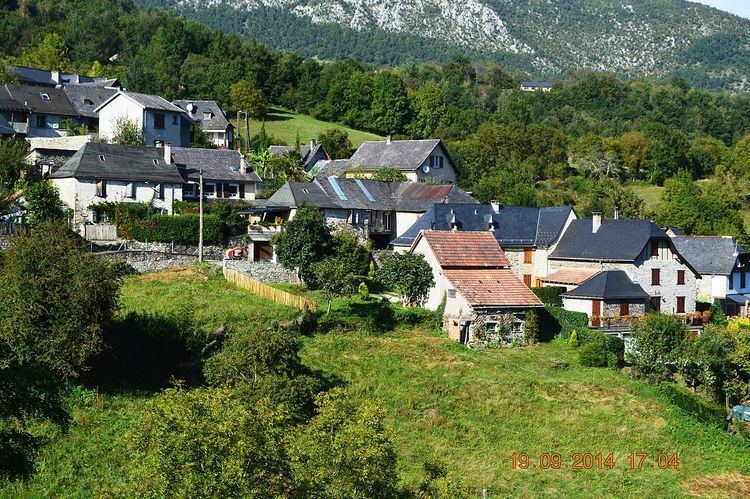Intercommunality Castillonnais Area 3.02 km² Population 60 (1999) | Region Occitanie Time zone CET (UTC+1) Local time Thursday 1:48 AM | |
 | ||
Weather 4°C, Wind S at 5 km/h, 84% Humidity | ||
Arrout is a French commune in the Ariège department in the Occitanie region of south-western France.
Contents
- Map of 09800 Arrout France
- Geography
- Administration
- Demography
- Culture and Heritage
- Religious Heritage
- References
Map of 09800 Arrout, France
The inhabitants of the commune are known as Arrotois or Arrotoises
Geography
Arrout is a commune in the Pyrenees mountains in the former province of Couserans some 12 km south-west of Saint-Girons and 3 km north of Castillon-en-Couserans. Access to the commune is by a country road from the end of the D404, which comes from Cescau in the south-east, to the village or by the Chemin d'Arrout from Audressein in the south. There is also a country road from Alas in the north-east. The commune is rugged and heavily forested throughout.
The Lez river forms the south-eastern border of the commune as it flows north-east to join the Salat at Saint-Girons. The Cayssau stream rises in the north-west and forms the north-western border before joining the Ruisseau de Lachein. The Ruisseau de Lasquert rises in the centre of the commune and flows north-east to join the Ruisseau de Lachein which flows south-west to join the Lez.
Administration
List of Successive Mayors
(Not all data is known)
Demography
In 2010 the commune had 75 inhabitants. The evolution of the number of inhabitants is known from the population censuses conducted in the commune since 1793. From the 21st century, a census of communes with fewer than 10,000 inhabitants is held every five years, unlike larger towns that have a sample survey every year.
Sources : Ldh/EHESS/Cassini until 1962, INSEE database from 1968 (population without double counting and municipal population from 2006)
Culture and Heritage
Arrout is one of the communes who received the Green Star of Esperanto from Esperanto info, an award given to mayors of communes who take a census of Esperanto speakers.
Religious Heritage
The Church contains three items that are registered as historical objects:
